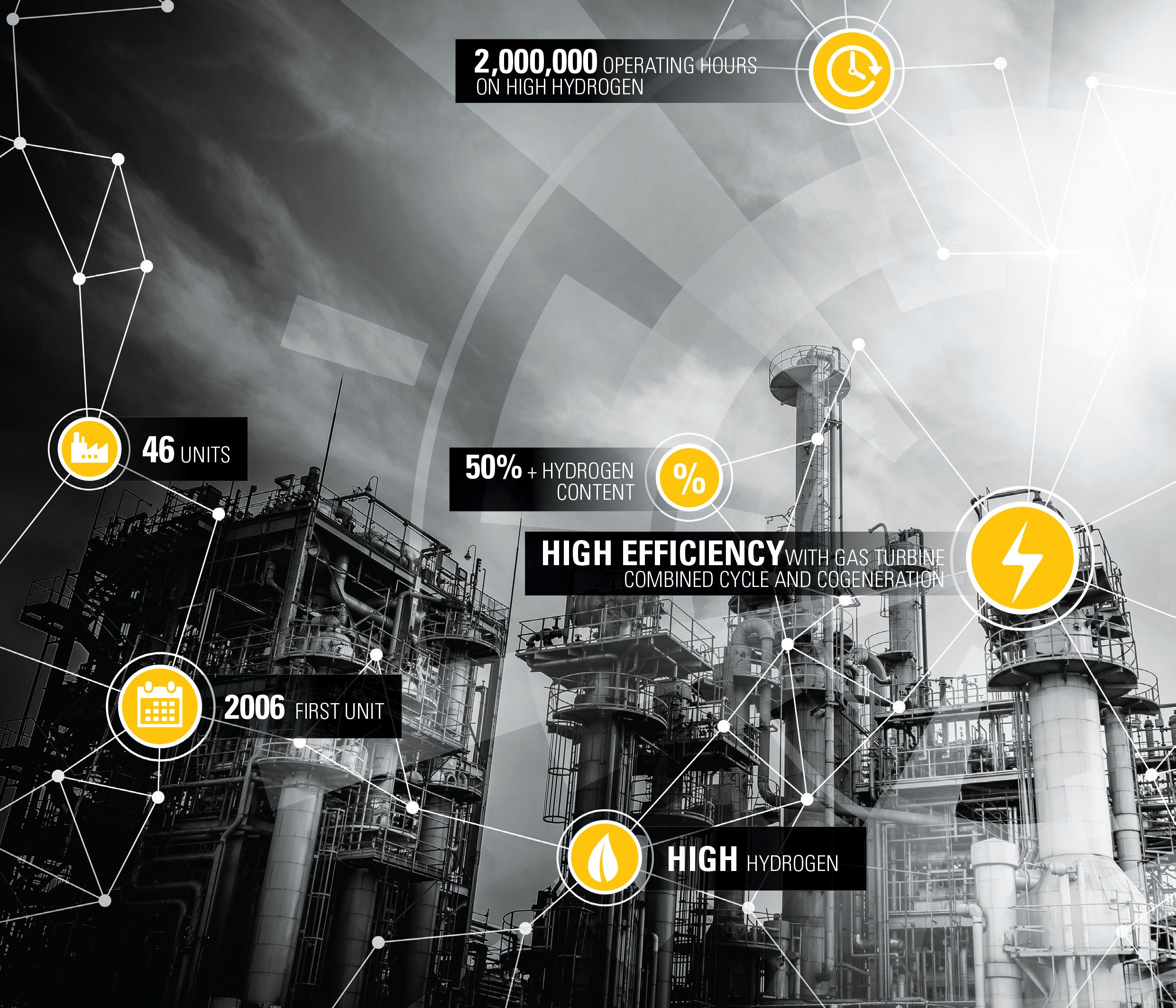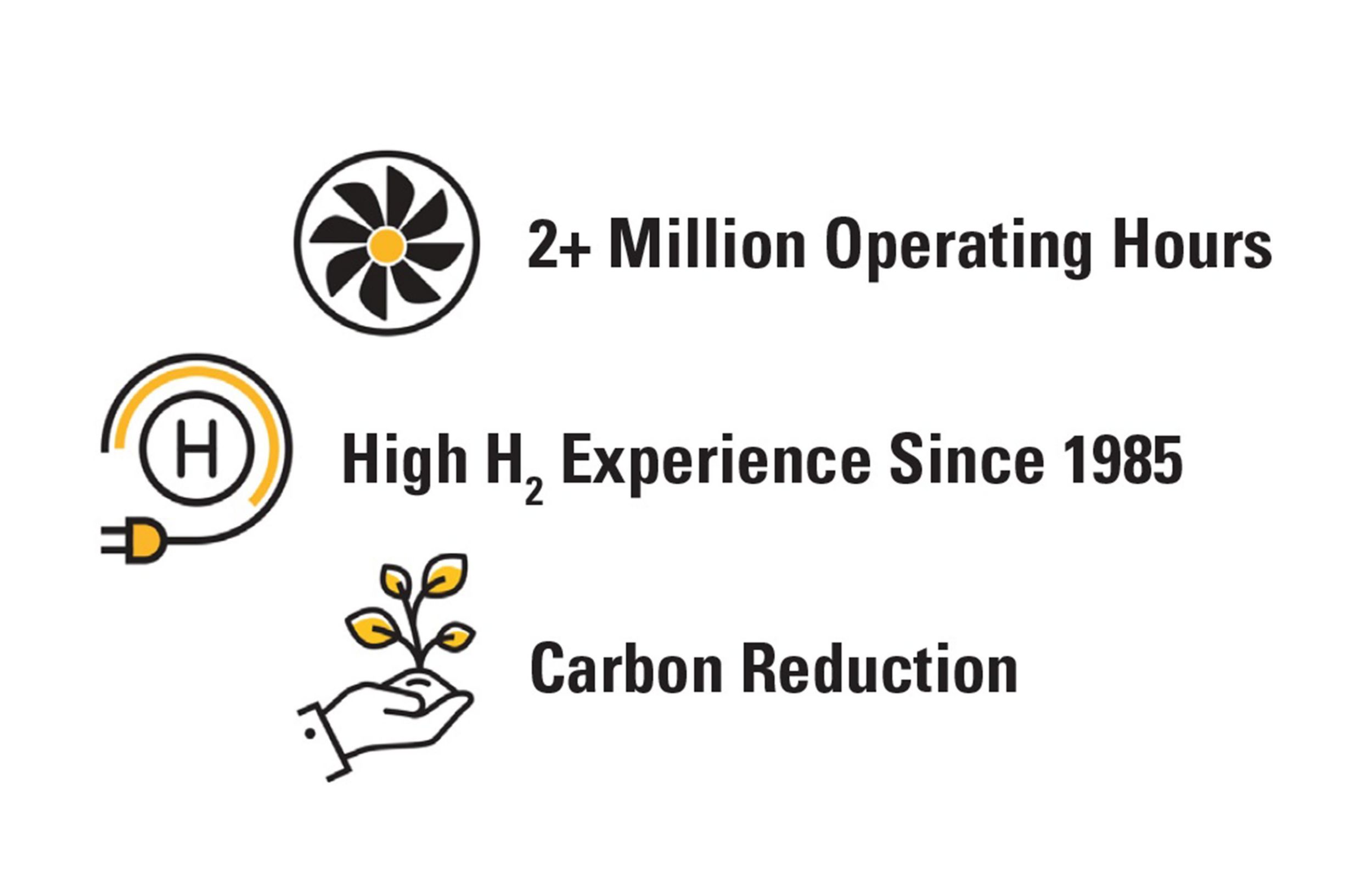Companies across the globe are setting carbon reduction goals to reduce GHG emissions. Displacing carbon intensive energy sources with hydrogen reduce the introduction of atmospheric CO2. The products of combustion of oxygen with any hydrocarbon produce CO2 in the reaction while hydrogen combustion only produces water. Increasing demands from many end users such as universities and larger industrial facilities provide further motivation for reducing carbon footprint, but still supplying reliable electricity and heat.
Solar Turbines continues to research and invest in order to understand the operational requirements for increasing concentration of hydrogen in fuel and transportation gases. Hydrogen has many advantages as one of the most versatile energy carriers, which can be produced from a multitude of sources and production modes:
Overall, Solar has been providing Hydrogen-rich power generation package solutions since 1985 and has logged more than 2 million hours of operation with up to 70% Hydrogen gas (H2).
As market and customer demands come into play, more focus is on the DLE configurations for higher hydrogen concentrations. Our team is committed to operate gas turbine packages on natural gas fuel with increased volumetric concentration.
Solar is an experienced sustainability partner, helping our customers build strategies around fuel flexibility, renewable fuels, and reducing greenhouse gas emissions. In addition to working toward increasing hydrogen capabilities, the team is looking into using other lower carbon fuels. Solar invests in researching and providing products that offer safe, reliable and high-performance solutions for our customers.
This webinar, hosted by the IDEA, features Solar's own Chris Lyons and Terry Tarver.
Learn MoreRead how Solar customers have been generating power using high hydrogen fuel.
Learn MoreRead how Solar has provided innovative Hydrogen-rich energy solutions since 1985.
Learn More


